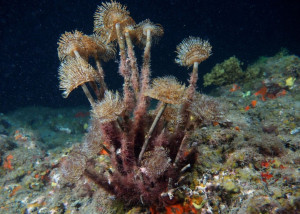While owners of maritime vessels long to have their hulls in contact with a piece of the Mediterranean, there’s a pest in our waters that could make this a reality for all the wrong reasons.
The Mediterranean fanworm (Sabella spallanzanii) is a species of marine polychaete that is native to shallow waters in the northeastern Atlantic Ocean and the Mediterranean Sea.
They were first found in Aotearoa in 2010 and have since established in several ports and sites around the country.
Fanworms can attach themselves to the hulls of yachts and ships, which enables them to establish at other coastal locations. If they spawn whilst the vessel is moored or docked in a harbour, a new population can establish.
The worm grows on soft sediments or anchors itself to rocks, jetties, pontoons or other solid surfaces. While it will grow on the hulls of moored boats, it does not usually foul frequently used vessels.
The Mediterranean fanworm is listed as an ‘Eradication’ species in the Tasman-Nelson Regional Pest Management Plan. Read more about the rules related to this pest.(external link)
The fanworm’s tentacle colour is variable, usually banded in orange, purple and white. Tubes can grow up to 40 cm long in deeper water, but they are not found at depths greater than 30 metres.
Fanworms can form dense colonies of around 1,000 individuals per m² which displace native species, such as mussels, and feed on the larvae of fisheries species.
They live inside stiff, sandy tubes that they produce from hardened mucus secreted by the worm. They protrude from the sand and have a two-layered retractable crown of feeding tentacles.
All vessel owners are required to report any sightings of Mediterranean fanworm to our Biosecurity team at 03 543 8400 or email [email protected].


